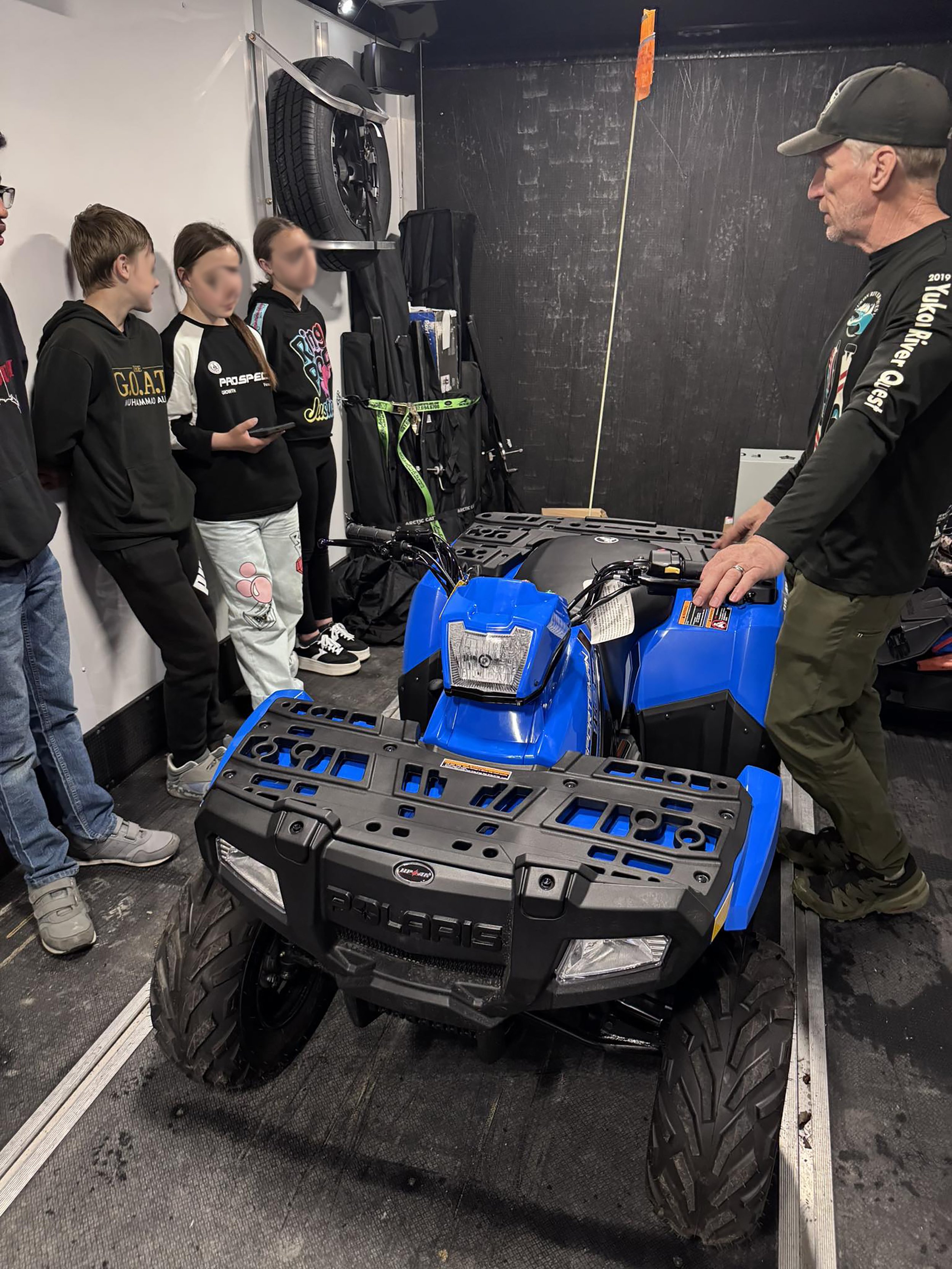When Right Goes Wrong
Contributed by Debra McGhan
Sometimes you can do everything right and still have things go horribly wrong. Allen and Avery McGhan learned that lesson first hand while on a recent bicycle outing through their town.
“We were having the best day,” said 12-year-old Avery. “Dad and I were on a bike ride and had stopped for lunch at the golf course. After we had a great meal and a fun time there, I wanted to ride longer so Dad said we could go through town the long-way back home.”
They were wearing bright clothing and both wore bike helmets. They were following all the rules of the road when they came to a busy intersection and stopped for the traffic light. When the light changed and indicated it was safe, Allen started across the street.
“There was a truck in the right lane and I tried to get the driver’s attention as I started past him but the windows were so dark I couldn’t really see him.”
As Avery watched in horror, the truck started moving and ran right over her dad, knocking him to the ground and pinning him underneath. She screamed and shouted, fortunately getting the driver’s attention so he stopped.
To her further shock, instead of getting out of the truck to apologize and lend aid, he rolled the window down and started shouting at Allen saying he was an idiot and should have waited.
“I was lying under the truck and thought, wait, what?” said Allen. “I was crossing in a designated crosswalk on a green light that gave us the right of way, so how did I mess up?”
He managed to pull out his phone and dialed 9-1-1. To his great relief, the local police, ambulance, and emergency support showed up within a few minutes to lend aid.
This situation could have turned out so much worse. Fortunately, the injuries proved non-life threatening and he recovered within a few days. But the lesson was clear. Even when you do everything right, things can still go very wrong.
When asked what lesson she had learned, Avery was quick to respond. “I realized there are a lot of people out driving around who are totally oblivious to what’s really going on.”
Allen said the lesson for him was that you must always be prepared and remain hyper-vigilant. Had he not been dressed appropriately, leading the way and moving slowly trying to get the driver’s attention, he could have been crushed and died. Or worse, it might have been his daughter.
Mike Buck with Alaska Safe Riders teaches these lessons in every class he gives. “Things can be very unpredictable. It’s up to each and every one of us to pay attention and do everything we can to make sure we are prepared and alert. I tell all my students, ‘adjust your speed to your vision’.”
Buck learned that lesson first-hand the hard way. While riding the Iron Dog race course one year, he was fighting a loose buckle on his helmet.
“There were three riders ahead and two behind me, so I told the others in my group to ride on ahead and I’d catch up,” said Buck.
After fixing the buckle problem, he set out after his partners.
“The light was flat and I was going full throttle when I slammed into an unseen ice pressure ridge and was launched way up into the air, landing with bone crushing pain on my back at least 30 feet from my sled.
“I had to lay there for a while because it totally knocked the wind out of me and I could hardly move,” he recalled. “I knew I’d messed up. It always makes you feel foolish when you don’t take your own advice. I was riding faster than I could react in bad light. I was just focused on catching up with my team. It’s a lesson I think is so important to share with others.
“I know I was fortunate because I was well prepared. And while I was injured, I was able to get up and managed to get back on my sled and ride the 100 miles to the next checkpoint. That fall ended my riding for the rest of the race and for a few days after. It also left me feeling pretty humble.”
Always remember, you can do everything right and still have everything go very wrong. It’s important to be prepared, stay alert and be hyper-vigilant, especially when trail or road conditions make visibility a challenge.
You can learn more and find training opportunities at AlaskaSafeRiders.org.


